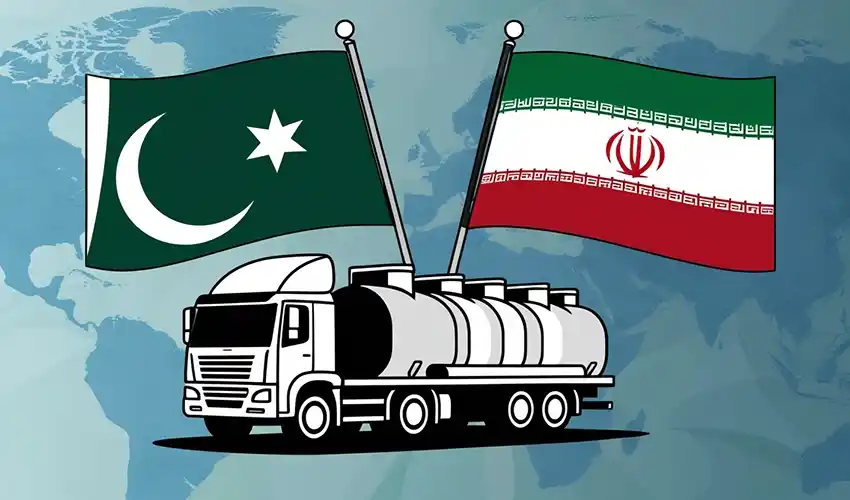One of the primary energy sources in Pakistan is liquefied petroleum gas (LPG). With features such as clean combustion, high efficiency, and affordability, this product has become one of the most popular energy sources in the country. LPG is widely used in Pakistan for domestic purposes such as cooking and heating, as well as in various industries. On the other hand, Iran, with its vast oil and gas reserves and the expertise of skilled professionals in the field, is recognized as one of the largest producers and exporters of LPG in the world. The geographical proximity of Iran and Pakistan, combined with Pakistan’s growing demand for a reliable energy supply, has created a unique opportunity for traders to export LPG to Pakistan.
Pakistan: A Major Consumer of Liquefied Petroleum Gas (LPG)
Pakistan, as one of the most populous countries in the world with over 240 million people and a developing economy, is heavily reliant on energy resources. The following reasons highlight why LPG is considered one of Pakistan’s primary energy sources:
- Despite having limited natural gas reserves, domestic production in Pakistan does not meet the vast demand. This is particularly true in remote and rural areas lacking gas distribution infrastructure. LPG, due to its ease of transport and distribution, is a suitable option for providing energy in these regions.
- A significant portion of LPG consumption in Pakistan is for domestic use. Especially in rural and remote areas, where natural gas infrastructure is scarce, many households rely on LPG for cooking and heating.
- Many small and medium-sized industries in Pakistan use LPG as the primary fuel for production. Industries such as food processing, agriculture, and chemical manufacturing depend on LPG as a reliable and accessible energy source.
- Pakistan’s growing population and expanding urbanization have increased the need for sustainable and diverse energy resources. This is particularly evident in densely populated cities like Karachi, Lahore, and Islamabad, where LPG consumption has risen significantly.
Advantages of Exporting LPG to Pakistan
Exporting LPG to Pakistan offers significant benefits for both countries. On one hand, Iran, with its vast gas reserves and geographical proximity to Pakistan, can leverage this trade to increase foreign exchange revenues and optimize the utilization of its gas resources. On the other hand, Pakistan, by importing LPG from Iran, secures a stable and cost-effective energy supply for its domestic and industrial needs, reducing its reliance on other suppliers. Ultimately, exporting LPG to Pakistan creates unique employment opportunities in both countries.
Transportation of LPG to Pakistan
LPG is primarily transported to Pakistan via land routes using LPG tanker trucks. The geographical proximity of Iran to Pakistan and the shared land borders make this method one of the most efficient and cost-effective options. It is essential for LPG transportation companies to ensure safety by carefully selecting LPG tanker trucks, providing proper training for drivers, and implementing stringent safety measures.
Barriers and Challenges
Like any business, LPG exports face their own set of challenges, which are outlined below:
- International sanctions on Iran: International sanctions against Iran have imposed restrictions on financial transactions, transportation, and access to international markets, complicating the export process.
- Currency fluctuations in both countries: Fluctuations in exchange rates, particularly in the value of the Rial and Rupee against the US Dollar, make financial planning and pricing difficult, impacting the profitability of transactions.
- Lack of adequate infrastructure in Pakistan: The lack of sufficient infrastructure in Pakistan, including storage facilities and an efficient transportation network, limits the country’s capacity to handle LPG imports.
- Insecurity in border areas between the two countries: Insecurity in the border regions between Iran and Pakistan can cause delays in exports. For example, in September 2024, the Taftan Customs Office in Pakistan, opposite Iran’s Mirjaveh Customs Office, blocked the unloading of 300 LPG tankers. The situation was resolved after negotiations between the Iranian Ministry of Foreign Affairs and Customs, restoring operations to normal.
Conclusion
As highlighted in this article, LPG exports to Pakistan have emerged as one of the most lucrative markets in recent decades, significantly contributing to the strengthening of relations between the two neighboring countries, Iran and Pakistan. However, this market also faces specific challenges and obstacles, addressing which can pave the way for sustainable development and enhance the regional trade share of both Iran and Pakistan.

